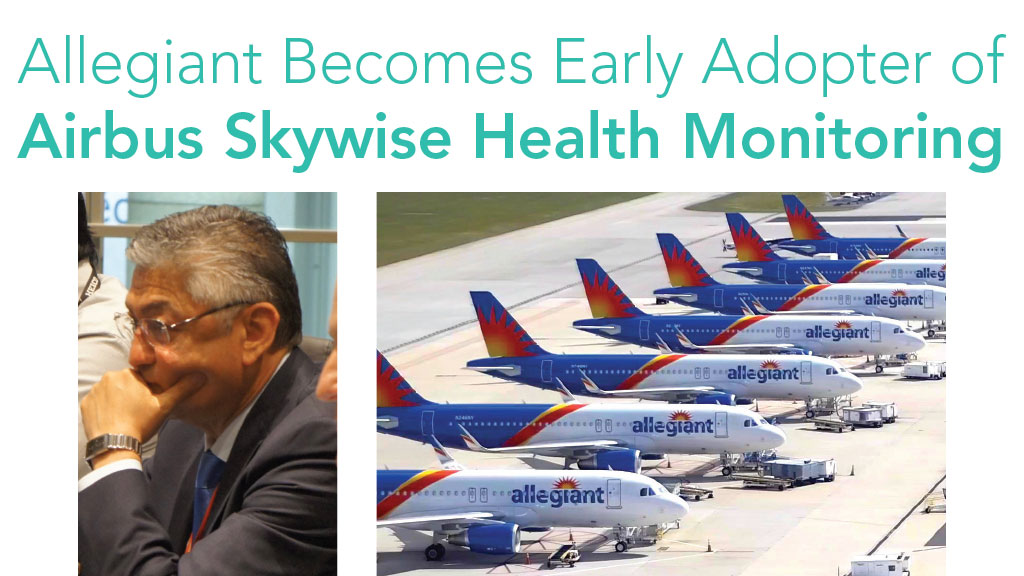Airbus has launched first operations of a new Skywise service – Skywise Health Monitoring (SHM) on Allegiant Air’s A320s. Together with Skywise Reliability Services (SRS) and Skywise Predictive Maintenance (SPM), SHM is hosted on Skywise, gathering live diagnostic feeds from the aircraft through its ACARS link to the airline’s information system.
Airbus says using the Skywise aviation data platform, SHM collates and centralizes alerts, flight-deck effects and maintenance messages, prioritizes them, correlates any faults with the relevant troubleshooting procedures, highlights operational impacts, provides the maintenance history of the system (from the logbook and information collected through Skywise Core and stored in the data lake), allowing effective tracking of the alerts.
When fully deployed Airbus says SHM will support airlines’ Maintenance Control Centers, Line Maintenance and Engineering departments in “identifying, prioritizing, analyzing and handling in-service events, enabling quicker decision-making and preparation of the optimal solution to ensure aircraft on-time dispatch and minimizing AOG risks.”
“At Allegiant, we integrated Skywise Health Monitoring in January of this year (2019) and we’ve seen some really nice efficiency gains on a couple of fronts. Skywise Health Monitoring not only envelopes a clean dashboard but it also lets us look at the prognostic and predictive alerts and allows for real time fault management within the platform,” says Chris Toro, vice president Maintenance and Engineering at Allegiant Airlines. “For example, we had an engine vibration that occurred right after a bird strike. It was written up by the crew as airframe vibration. As a result of the Skywise alerting we knew to look at the engine. So we directed the technicians to the engine and found an N1 problem. We were able to fix that and release the airplane back to service in a few hours.” Toro said that troubleshooting a vibration which can come from the rudder, elevator or gear doors can cause days of work
In another example Toro spoke about wing anti-ice and pneumatic bleed valves. One of their aircraft triggered for a predictive alert for a slow-to-close, high-pressure valve on the number two engine. This alert happens in the background in the predictive alerting, Toro explained. As a result, the maintenance crews were able to replace the valve during regular overnight maintenance. They followed that component back to the shop and were able to determine that the valve failed a function test, a minimum opening pressure test, internal leak test and had springs, arms and levers all starting to wear. “This turned into a true planned maintenance event and not an irregular operation.”
Overall, Airbus says SHM will save airlines time and decrease the cost of unscheduled maintenance. It is natively interfaced with SPM and SRS to provide an integrated user experience, and also ready to harness the new on-board Flight Operations and Maintenance Exchanger (FOMAX) data router which can capture over 20,000 real-time aircraft parameters, SHM enables end-to-end unscheduled event management/fixes, for example by anticipating tools and parts’ availability closest to the aircraft. More early adopters will join in the months to come to pilot SHM for other Airbus aircraft, including the A330, A350 and A380.
“We are bringing operational context to point of use, which means [operators] have the information necessary to take care of the problem and what the technical data is that is needed to solve the issue,” says Martin Fendt, Airbus Media Relations.
